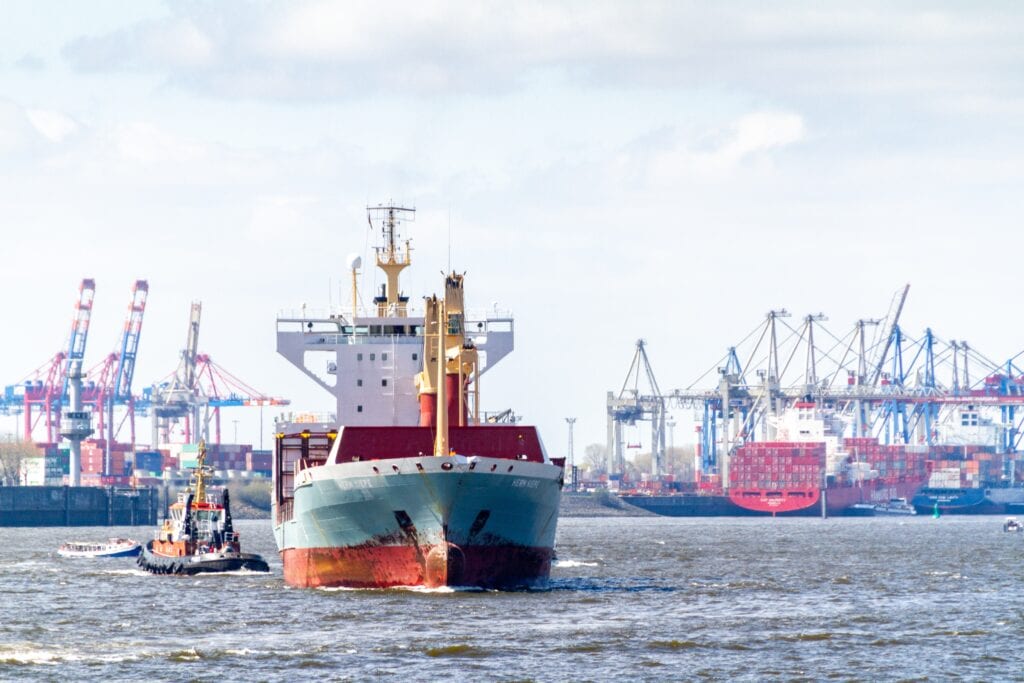As digitization takes hold and consumer preferences shift, logistics companies are entering an unparalleled period of transition. New technologies enable greater productivity and more collaborative operating models and reshape the market in ways that are only now becoming evident. Newcomers are also shaking up the market, whether they are start-ups or industry experts.
Changes in consumer expectations, technological breakthroughs, new competitors in the market, and new ways to compete or collaborate are all disrupting the logistics industry. Depending on which segments they work in, the type of ownership they have, and where they are based, these disturbances have somewhat different consequences for individual businesses. Government interference and trade flows between regions and territories also have an effect on the industry, but these factors are highly dependent on national politics and geography.
1. Higher Customer Expectations

Industrial customers, like individual consumers, now demand quicker, more flexible, and transparent shipments at a lower price. It’s unsurprising that both operating models and profitability are under pressure throughout the industry. And the rate of transformation could be even higher for large manufacturing and retail customers than for final private consumers.
Manufacturing companies are facing much greater productivity and output demands than ever before. Their consumers expect a shorter time to market, lower defect rates, and customized goods. Ultimately, the outcome could be a once-impossible goal of manufacturing each commodity to the requirements of a particular end-customer. The industrial Internet of Things, also referred to as ‘Industry 4.0’, allow manufacturing companies, whether they manufacture industrial machinery, automobiles, aeroplanes, or consumer products, to redefine anything from their customer interactions to their supply chains. All of this has a significant impact on transportation and logistics. 3PLs must combine data analytics and social supply chains to improve traceability and predictability significantly.
Many logistics firms often cater to business-to-consumer (B2C) clients. Consumers became digital well before many retailers, and some segments of the industry are still struggling to keep up.
Shippers are not often included in a branded retail experience. Most private end-users are ‘shipper-agnostic,’ which means they don’t care who ships their products as long as they get them safely, efficiently, and cheaply.
Many people want more flexibility in terms of when and where they get their goods. The majority are unwilling to pay for shipping: they expect it to be free, but they are willing to pay a premium for extra services, such as quicker delivery of high-value products. Customers currently have a low level of acceptance for dynamic pricing for parcels; they expect to pay the exact delivery price regardless of seasonal capacity constraints faced by their shipper, except for surcharges for same-day, overnight, or expedited service.
2. Technological Breakthroughs

The way logistics companies work is getting transformed by technology. Success will require a high level of digital fitness: the winners will be those who understand how to leverage a diverse array of emerging technologies, from data analytics to automation and platform solutions. Those that do not run the risk of being obsolete. However, with so many innovations vying for management attention and funding, it will be essential to define a consistent digital strategy that is incorporated into business strategy.
There is no other sector in which industry analysts will make decisions based on data and analytics as transportation and logistics in the next ten years. The industry has never had more data at its fingertips. There are many opportunities to enhance efficiency and customer service, and 3PLs that are part of a digitally integrated value chain will benefit from dramatically enhanced forecasting to adjust capability and schedule routes. The industry can achieve truly dynamic routing by incorporating machine learning and artificial intelligence techniques into data analytics.
Cloud computing enables platform solutions, which in turn enables the use of novel business models. Additionally, it can provide scalability and versatility and standardized and harmonized processes across the organization. It is critical for 3PLs and carriers that have expanded through acquisitions and are now reliant on a patchwork of legacy systems.
The Labour force is a vital component of any logistics operating model, and there has always been an inherent trade-off between service levels and costs. However, automation simplifies this equation, enabling businesses to provide superior service while still saving money.
Several of the industry’s most labour-intensive operations, from warehousing to last-mile distribution, are on the verge of being completely or partially automated. Automated warehouse systems are already in use, and their complexity is growing. Advances in data processing and optics now allow the automation of previously considered too complex tasks – such as trailer loading and offloading at reasonable speeds. Package delivery may also benefit from increased automation, facilitated by technologies such as self-driving cars or delivery drones. Package delivery may also benefit from increased automation, facilitated by technologies such as self-driving cars or delivery drones.
3. Higher Competition

Platform technology has enabled the emergence of new business models, which are often powered by start-ups entering the logistics industry. The majority of new entrants are aiming to penetrate the industry through the use of new technologies. New entrants to the freight forwarding industry are focusing on more agile pricing. Some encourage carriers to bid on loads, which enables them to reduce their bids in order to fill space. Additionally, they are delivering quotes faster and increasing price transparency. In recent years, there has also been a surge of start-ups in last-mile distribution. Several of these businesses are leveraging technology to participate in the ‘sharing economy’ by balancing available resources with distribution requirements.
Major players from other sectors could have an even greater ability to reshape the industry’s competitive landscape.
Autonomous vehicles are one possible example: technology companies or partnerships between technology and automotive which join the industry, especially with self-driving lockers or machine-to-machine parcel station loading for last-mile delivery. Crowdsharing systems can also arise as a result of or independently of autonomous vehicle production.
Customers within the industry can also become substantial new entrants.
Amazon is a clear example: the company is looking to broaden its in-house experience in warehousing and logistics while still developing its own delivery capabilities. As a result, it acquired a warehouse automation expert, which it has rebranded as Amazon Robotics. Alibaba is attempting to develop distribution services for its sellers in Asia by forming joint ventures with several logistics firms, a department store, an investment fund, and a company specializing in port logistics.
4. Better Collaborations

Horizontal collaboration is already taking place, especially in the last-mile distribution space, but it is hampered by inconsistency. Increased productivity can be accomplished through more consistent standards and increased cooperation, whether through partnerships, joint ventures, or mergers and acquisitions. There are already significant instances of market participants cooperating.
For several years, companies such as FedEx and DHL have partnered with national postal companies and small local players. However, as new technology becomes available, collaboration can become even more fluid.
For many sectors, the conventional wisdom holds that a greater number of rivals benefits consumers.
However, there are significant advantages of seeing further consolidation, not less, in some logistics industries. According to one estimate, a 10%–30% improvement in productivity in the EU logistics sector will result in cost savings of €100–300 billion for the European industry.
There are many innovative ways for logistics organizations to collaborate more effectively in order to maximize asset utilization.
DB Schenker, for example, recently signed a five-year agreement with online freight exchange company uShip to create a network for more efficient connection of truck drivers and shipments. With disruption on the horizon, there are many prospects for collaboration and capability enhancement in critical areas.
Related posts
- Top 11 Trucking Industry Trends In 2024
- 10 Must-Have Transport Management System Features
- MOOWR License Scheme: Everything You Need To Know
- 7 Key Functions Of Logistics Company
- Logistics Market In India
- Top 11 Freight Forwarders In India [2024]
- Navigate Supply Chain Disruptions With Digitalization
- 6 Challenges Faced By Transportation Companies In India
- 10 Best Third Party Logistics (3PL) Companies In Bangalore [2024]
- 3PL vs In-House Logistics: 6 Key Differences
- 8 Latest E-commerce Logistics Trends In 2024
- 8 Expert Strategies To Reduce Your Logistics Costs
- Top 10 Freight Forwarders In Mumbai
